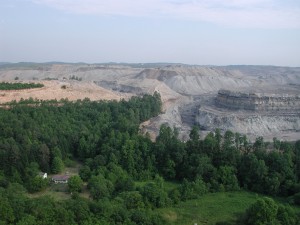- Like
- Digg
- Del
- Tumblr
- VKontakte
- Buffer
- Love This
- Odnoklassniki
- Meneame
- Blogger
- Amazon
- Yahoo Mail
- Gmail
- AOL
- Newsvine
- HackerNews
- Evernote
- MySpace
- Mail.ru
- Viadeo
- Line
- Comments
- Yummly
- SMS
- Viber
- Telegram
- Subscribe
- Skype
- Facebook Messenger
- Kakao
- LiveJournal
- Yammer
- Edgar
- Fintel
- Mix
- Instapaper
- Copy Link
Main Points:
- 59 out of 409 persons reported having cancer in mining communities compared to 34 out of 360 persons in non-mining communities.
- Community Based Participatory Research (CBPR) was conducted through door-to-door interviews by trained college students.
- 4% of people contacted to be surveyed participated in the study.
Overview Summary
- Study Background:
- 773 adults interviewed by door-to-door surveys self-reported their different types of cancer in mining (Raleigh and Boone county, WV) and non-mining communities (Pocahontas county, WV)
- Surface water and ground water around mountaintop mining (MTM) activity are characterized by elevated sulfates, iron, manganese, arsenic, selenium, hydrogen sulfide, lead, magnesium, calcium and aluminum; contaminates severely damage local aquatic stream life and can persist for decades after mining at a particular site ceases.
- Elevated levels of airborne particulate matter around surface mining operations include ammonium nitrate, silica, sulfur compounds, metals, benzene, carbon monoxide, polycyclic aromatic hydrocarbons, and nitrogen dioxide.
- Findings:
- Reported cancer rates were higher in the mining community (14.4% of adults in the mining community vs 9.4% in the non-mining community)
- People in the mining communities were 2.03 more likely to report having cancer than people in non-mining communities.
- Conclusions:
- If the rates found in this study represent the region, a 5% higher cancer rate (14.4% vs. 9.4%) translates to an additional 60,000 people with cancer in central Appalachian mountaintop mining counties.
- On a national level, the difference between 11.2 and 3.9% (the rates in the Coal River sample and the US, respectively, not including non-melanoma skin cancers) translates to an additional 87,600 people with cancer in central Appalachian mountaintop mining areas compared to national rates.
- Implications:
- Mountaintop mining (MTM) is linked to increased community cancer risk.
- Residents near MTM sites complain of health concerns, air and water contamination, reduced property values and damaged family cemeteries, and experience psychological stress from fears of floods, landslides, flyrock, and the destruction of their natural heritage.
- Policy Considerations:
- Efforts to reduce cancer and other health disparities in Appalachia must focus on mountaintop mining portions of the region.
- Funded by and/or conducted by:
- Acknowledgements to Matthew Armistead, Peter Illyn, Allen Johnson, Kate Kirby, Michael McCawley, and the volunteer interviewers.
Citation: Hendryx, Michael, et al. “Self-Reported Cancer Rates in Two Rural Areas of West Virginia With and Without Mountaintop Coal Mining.” Journal of Community Health 37.2 (2012): 320-327. CINAHL Complete. Web. 14 Feb. 2017.









